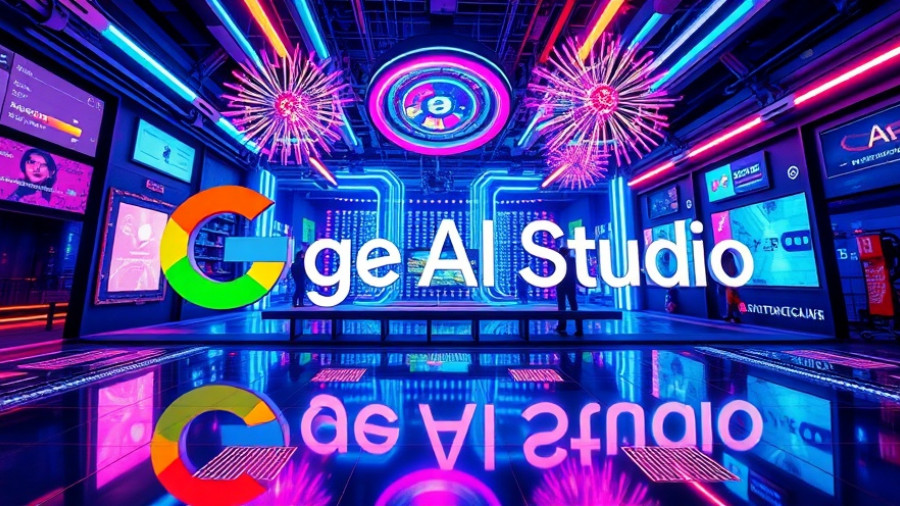
Revolutionary AI Tool: GenSpark
In a world where artificial intelligence continues to evolve, GenSpark emerges as a groundbreaking tool that's turning heads. This Chinese super agent is not just another AI; it's a versatile partner capable of creating tailored websites, generating multimedia content, and conducting deep research—all at no cost. In a recent demonstration, a user was able to create a beautifully designed SEO agency website simply by providing a prompt, a feat that rivals its pricier competitor, Manis.
In 'GenSpark FREE AI Super Agent: BETTER Than Manus? 🤯', the discussion dives into the unique features of the GenSpark AI tool, prompting an analysis of its implications for professionals and business owners.
Comparing GenSpark to Traditional AI Tools
For context, let's talk about Manis. It's a well-known AI service that happens to charge $200 per month for its offerings. While it serves its purpose well by generating decent outputs, it lacks the customization and intuitiveness that GenSpark boasts. Users of Manis often find themselves reliant on stock images and generic templates. GenSpark flips the script by integrating specific user images, unique branding elements, and creating visually stunning websites with interactive features that feel personal and adaptive.
Unleashing the Power of AI Design
When comparing the outputs from GenSpark and Manis, the contrast is stark. A user-friendly approach allows GenSpark to research its user effortlessly, adapting to individual requirements by generating content that not only performs well but also resonates. In one demonstration, the AI was prompted to redesign an existing website, and the results were phenomenal. The newly generated website included captivating animations, colored interfaces, and authentic personal elements that made it stand out against the original, sweeping aside any apprehensions one might have about using AI for such tasks.
Beyond Websites: Versatile Content Creation
What makes GenSpark particularly noteworthy is its ability to go beyond just creating websites. It can generate videos, offer deep research reports, and even facilitate user interactions through chat. For example, when tasked with a traditional research prompt on orca whale social structures, GenSpark produced a well-structured report complete with multimedia elements, showcasing its vast capabilities. This adaptability reveals GenSpark's promise in engaging with users meaningfully, making it an excellent tool for marketers and businesses looking to build a robust online presence.
Growing Concerns and Safety Issues
With great power comes great responsibility. As we integrate AI tools into our daily workflows, concerns around using autonomous systems safely are paramount. GenSpark reassures users by operating within a secure virtual environment, ensuring that personal data and sensitive information remains untouched. This commitment to safety allows professionals, business owners, and marketers to explore AI benefits without detrimental risks.
The Future of AI in Marketing
The rapid evolution of tools like GenSpark signals a larger trend towards increased autonomy in AI agents. As these tools become more sophisticated, their potential to support businesses in enhancing online visibility through SEO strategies grows. The key to staying ahead in the digital marketing game will rely on effective utilization of these AI tools, augmenting human efforts rather than replacing them. Innovations filed under AI-generated content, SEO optimization, and personalized marketing strategies are vital, and GenSpark fits snugly into this advancing landscape.
Actionable Insights for Professionals
For businesses looking to harness the power of AI, starting with tools like GenSpark can yield impressive ROI. Here are some actionable tips:
- Embrace Experimentation: Use the free version to explore its various capabilities from content creation to web development.
- Stay Informed: Knowledge is power. Understand how AI impacts SEO trends, advancements, and effective strategies.
- Build Relationships: Leverage the community around AI tools and participate in forums, webinars, and discussions to enhance your understanding and application.
Final Thoughts
In an era where digital marketing and AI collide, understanding and leveraging tools like GenSpark become essential. From redefining your online presence to enhancing SEO for business success, the game has changed. Explore GenSpark and see how it can help you make significant strides in your marketing efforts. As technology continues to innovate, staying ahead is not just optional—it's imperative.
 Add Row
Add Row  Add
Add 




Write A Comment